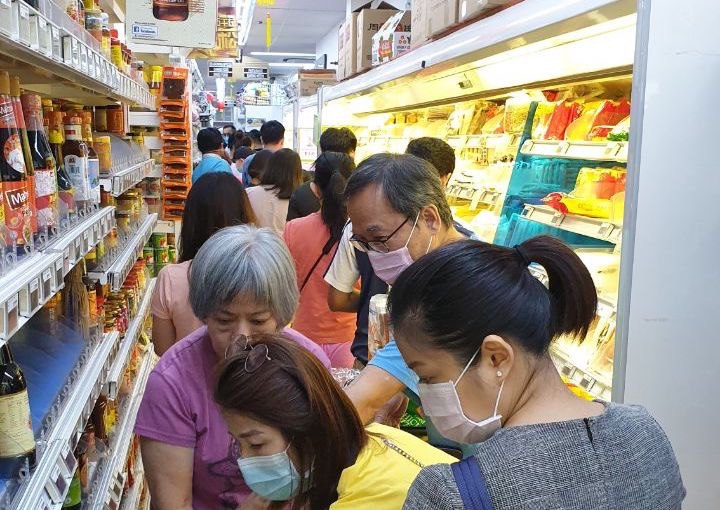By Kayla Toh |
On July 8, a vertical farm was officially opened at the Association for Persons with Special Needs (APSN) Centre for Adults by Minister for Social and Family Development Tan Chuan Jin. Situated in Kembangan-Chai Chee Community Hub, the vertical farm is geared towards teaching farming skills to individuals with mild intellectual disabilities.
Vertical farming, or skyscraper farming, is toted as the solution for growing food in cities. Vegetables and fruits are cultivated in high-rise, vertically stacked layers with the aid of agriculture innovations, such as controlled-environment agriculture (CEA) technology that control lighting, humidity and temperature.
Due to the scarcity of land, traditional farming was phased out in the ‘70s and ‘80s to make space for Singapore’s industrial development. To realise the dream of food self-sufficiency, it seems that Singapore will have to reach for the sky.
Given that over 90 percent of Singapore’s food is imported from over 30 countries, our food supply and prices are highly dependent on and disrupted by any turmoil in the outside world.
With the additional challenge of feeding our rapidly growing population, vertical farming is emerging as a novel but distinct possibility in Singapore’s future.
Sky Greens: Singaporeís First Commercial Vertical Farm
Established with funding from the Agri-Food and Veterinary Authority (AVA), Sky Greens is Singapore’s first commercial vertical farm as well as the world’s first low carbon, hydraulic water-driven vertical farm.
The nascent farming technology employs a self-sufficient vertical farming system, also known as “A-Go-Gro” technology, which delivers considerable yields with minimal exploitation of land, water and energy resources.
The “A-Go-Gro” technology, invented by Mr Jack Ng, has bagged several international awards and acclaim, including the biennial INDEX: Award 2015 — the world’s most prestigious design prize — and the 2015 European Society for Quality Research’s (ESQR) International Diamond Prize for Excellence in Quality.

The 3.65-hectare Sky Greens farm in Lim Chu Kang, the size of five football fields, produces tropical vegetables such as Chinese cabbage, bok choy (xiao bai cai) and milk cabbage (nai bai cai). The vegetables are stacked and harvested in six-metre tall modular A-frame towers made of aluminium and steel. Each A-frame tower contains 32-38 racks of vegetables.
These modular and energy-saving towers are greatly customisable to suit the cultivation conditions of different plants. As of 2015, 1,040 modular towers are housed in large greenhouses, according to IE Singapore. Mr Ng hopes to erect over 2,000 towers in the next few years.
The vegetables are planted on slowly-rotating vertical racks powered by a gravity-aided water-pulley system, which deploys rainwater collected in overhead reservoirs. Only 0.5 litres of water is required to rotate the 1.7 ton structure. The rotating system ensures that all vegetables receive an equal distribution of sunlight, air flow and irrigation. The water driving the system is recycled and filtered before being returned to the plants.
Eventually, the organic waste is composted and reused while the vegetables are picked fresh and sold to local supermarkets.
As stated on the AVA website, only 8 percent of the vegetables in Singapore are locally produced. By increasing the capacity of vertical farming, Sky Greens believes that local produce will jump to 50 percent.
Dr Ngiam Tong Tau, chairman of Sky Urban Solutions, told IE Singapore: “Jack’s system consumes very little energy and water. It also makes use of available sunlight. On top of that, productivity is increased by up to 10 times, which means we only need 1 hectare of land to produce the same quantity of vegetables on 10 hectares of land for Singapore.”
In addition, locally grown fresh vegetables minimise carbon dioxide emissions and food spoilages during transportation. Such vegetables are widely accepted by consumers, but they cost slightly more than imported vegetables, as pointed out in an interview by CNN.
“Other countries have a comparative advantage in food production, hence it is cheaper to import food from these countries, rather than do farming locally. Land is too expensive in Singapore,” said Mr Ng Kim Chuan, research assistant at the School of Biological Sciences, Nanyang Technological University.
Another disadvantage of vertical farming is the difficulty of farming different varieties of vegetables — compared to conventional farming, limited varieties of vegetables can be grown in a greenhouse. Said Mr Ng, “Vertical farming might not be suitable for the cultivation of some crops as some plants would need to grow in the shade, while some other plants would need more moisture.”
However, Singapore receives bountiful sunlight all year round, and this is a distinct advantage in the implementation of vertical farming.
Floating Farm in the Sky
Short of arable land in the dense metropolis of Singapore? Besides vertical farming on land, another solution would be to plant … on the sea.
It sounds futuristic and inconceivable, but vertical floating farms might become a reality in Singapore’s future farming scene, thanks to Barcelona-based firm Forward Thinking Architecture.
The Spanish architecture firm has conceptualised a plan of building a ‘floating’ network of 150-metre tall L-shaped looping farm towers near the shoreline of Singapore. This concept, known as F.R.A. (Floating Responsive Architecture), is inspired by the floating fish farms in the city-state.
The floating towers would plant crops all year round and sensors are installed to keep track of the crops and send real-time data to their caretakers. At the same time, data analytics on consumers’ food consumption would also decide which local produce to be planted in the farms to reduce food wastage.
Mr Javier Ponce, the principal and founder of Forward Thinking Architecture, told the press that the loop shape allows the vertical structure to receive sufficient sunlight.
The architects hope to work together with the government in Singapore, as well as technology and food companies, to realise this revolutionary mission. Presently, the firm is producing a set of prototypes to test out the feasibility of their proposal.















